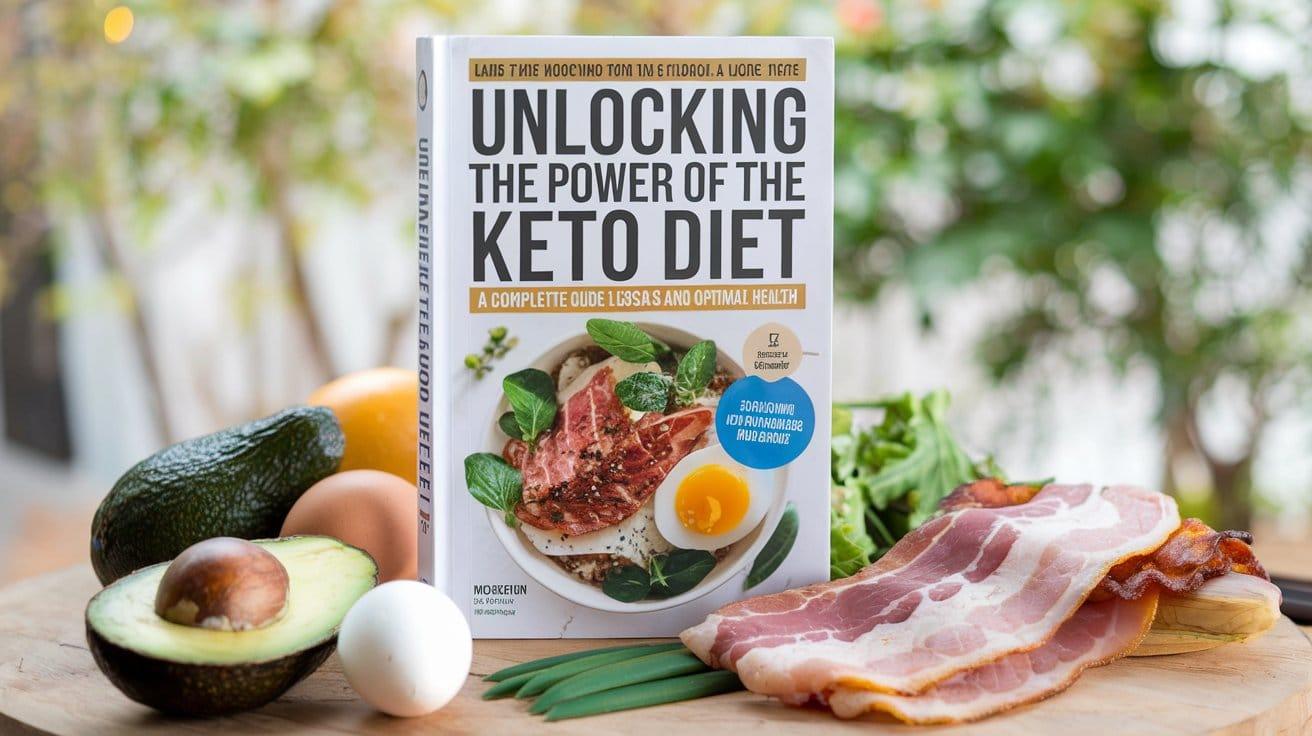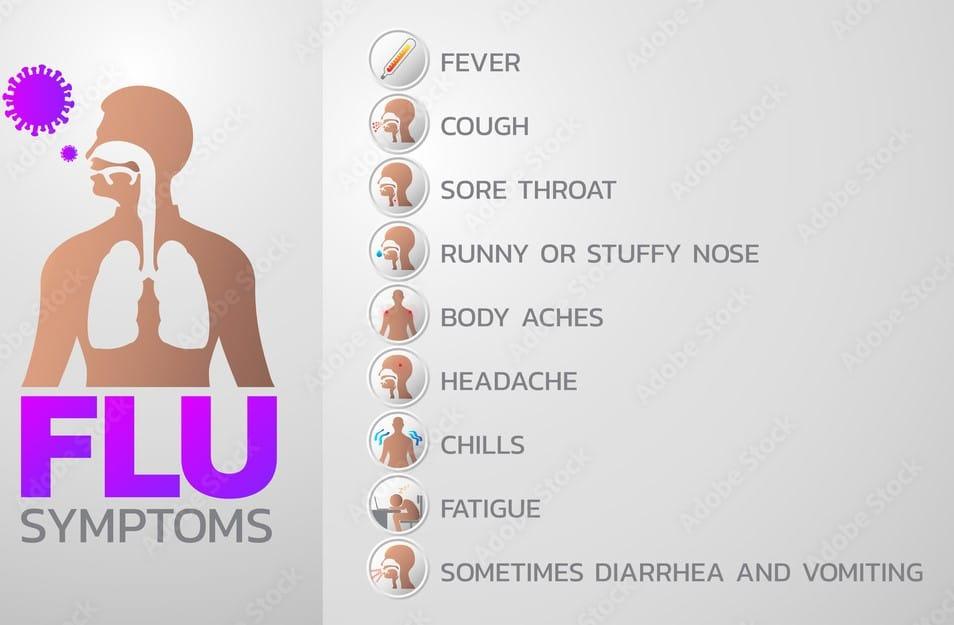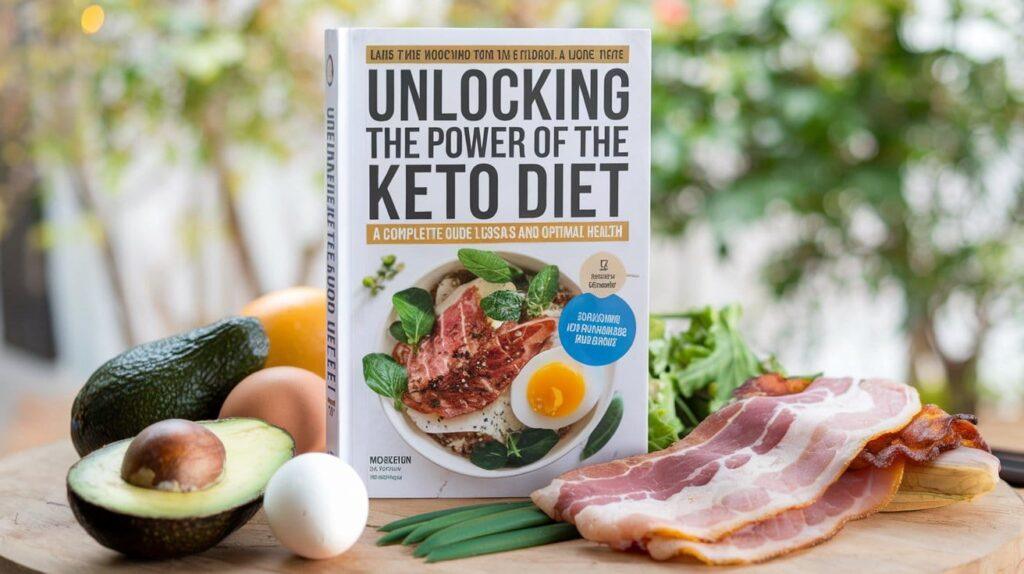Table of Contents
ToggleUnlocking the Power of the Keto Diet: A Complete Guide for Weight Loss and Optimal Health
 The ketogenic diet, or the “keto” diet, has surged in popularity over the last few years due to its potential for weight loss, mental clarity, and improved energy levels. It’s a high-fat, low-carb approach that shifts your body from burning carbs (glucose) to burning fat (ketones) for fuel, offering a unique way to enhance health and fitness.
The ketogenic diet, or the “keto” diet, has surged in popularity over the last few years due to its potential for weight loss, mental clarity, and improved energy levels. It’s a high-fat, low-carb approach that shifts your body from burning carbs (glucose) to burning fat (ketones) for fuel, offering a unique way to enhance health and fitness.
In this detailed guide, we’ll break down the keto diet, its benefits, how it works, what to eat, and tips to make it easier for beginners.
What is the Keto Diet?
The keto diet focuses on reducing carbohydrate intake to encourage the body to enter a metabolic state known as ketosis. In this state, the body becomes more efficient at burning fat for energy, and the liver produces ketones from fat that the body can use as fuel.
Key Macronutrient Breakdown:
• Fats: 70-75% of daily intake
• Protein: 20-25% of daily intake
• Carbohydrates: 5-10% of daily intake (typically under 50g per day)
How Does Ketosis Work?
Ketosis is a natural metabolic state where the body, in the absence of sufficient carbs, turns to fat for energy. The liver converts fats into ketones, which then become the primary fuel source for the brain and muscles.
Reaching ketosis can take anywhere from 2-7 days of strict carb restriction. This switch brings various benefits, from improved fat burning to enhanced mental clarity.
Benefits of the Keto Diet

1. Accelerated Weight Loss
By using fat as the primary energy source, keto aids in significant fat loss, particularly visceral fat around the abdomen. This happens due to lower insulin levels and higher rates of fat oxidation.
2. Improved Mental Focus and Clarity
Ketones are a more stable and efficient fuel for the brain than glucose, leading to sharper cognitive function and sustained mental focus without the energy crashes from carbs.
3. Appetite Control
High-fat meals are satiating, reducing hunger cravings and snacking, making it easier to maintain a calorie deficit for weight loss.
4. Stable Blood Sugar Levels
Keto is beneficial for managing insulin sensitivity, reducing the risk of Type 2 diabetes, and helping those with insulin resistance.
5. Increased Energy
Fat is a denser source of energy than carbs, providing long-lasting, sustained energy, especially for endurance athletes or individuals with intense workout regimens.
Foods to Eat on the Keto Diet
Understanding which foods to include is critical for keto success. Focus on high-fat, moderate-protein, and low-carb ingredients.
Keto-Friendly Foods:
• Fats & Oils: Avocado, olive oil, butter, ghee, coconut oil
• Protein: Fatty cuts of meat, chicken, fish (salmon, tuna), eggs
• Dairy: Full-fat cheese, heavy cream, sour cream
• Low-Carb Vegetables: Leafy greens (spinach, kale), cauliflower, zucchini, broccoli
• Nuts & Seeds: Almonds, macadamia nuts, chia seeds
• Beverages: Water, coffee, tea (unsweetened), bone broth
Foods to Avoid:
• Sugary Foods: Soda, candy, desserts, fruit juices
• Grains and Starches: Bread, pasta, rice, oats
• High-Carb Vegetables: Potatoes, corn, peas
• Beans & Legumes: Lentils, chickpeas, black beans
• Alcohol: Beer, sugary cocktails
Common Challenges & How to Overcome Them

1. Keto Flu
When starting keto, many people experience symptoms such as headaches, fatigue, and irritability—known as the “keto flu.” These symptoms occur as the body adapts to fat burning. Staying hydrated and increasing electrolyte intake (salt, potassium, magnesium) can help ease this transition.
2. Social and Eating Out Challenges
It can be difficult to stick to keto in social settings or when dining out. Look for meals that include grilled meats, salads, and low-carb vegetables. Request substitutions like replacing fries with a side of greens or swapping sugary sauces with olive oil or butter.
3. Carb Cravings
Cravings for bread, pasta, and sugary snacks may linger during the first few weeks. Combat these by preparing keto-friendly snacks like fat bombs, bacon-wrapped avocado slices, or deviled eggs.
Sample 7-Day Keto Meal Plan

Here’s a simple keto meal plan to help you get started:
Day 1:
• Breakfast: Scrambled eggs with avocado and bacon
• Lunch: Grilled chicken salad with olive oil dressing
• Dinner: Baked salmon with asparagus
Day 2:
• Breakfast: Keto pancakes with butter and sugar-free syrup
• Lunch: Tuna salad wrapped in lettuce
• Dinner: Zucchini noodles with pesto and shrimp
…
(Continue with more meal ideas for the week)
Is Keto Right for You?
Keto can be a highly effective tool for weight loss, metabolic health, and mental clarity, but it’s not for everyone. Those with certain medical conditions, such as diabetes or heart disease, should consult a healthcare professional before starting. It’s also important to balance your nutrients and not overconsume unhealthy fats or ignore fiber intake.
Conclusion:
The ketogenic diet can transform your body and health, but it requires a solid understanding of what to eat and how to avoid common pitfalls. By following the tips in this guide, you can experience the full benefits of keto, from fat loss to better focus and sustained energy. Ready to get started on your keto journey? Stay consistent, and don’t forget to monitor your progress along the way!




